Getting Fitted For Running Shoes: Road Runner Sports Helps Runners With The Perfect Fit
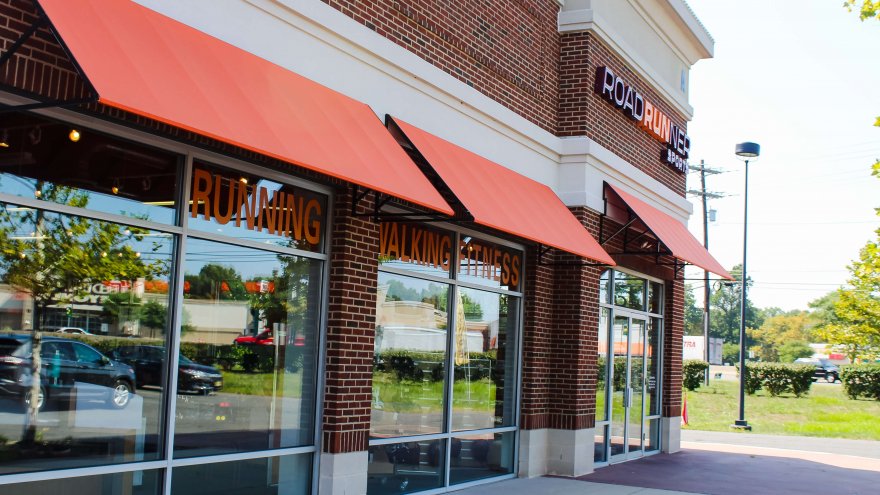
The sneaker game is strong among runners. With stylish colors and designs, a fresh pair of kicks gives that extra boost of motivation and makes the runner look good doing with they love—well, at least when it comes to their feet. Many runners might just pick out a new pair based on the brand name or color thinking they already know their size. But getting fitted for running shoes is more than a rite of passage for runners. It is a necessity.
“You want to make sure that you go and get properly fitted,” Road Runner Sports Fit Expert Patrick Silverio told RunnerClick. And he is talking about both beginners as well as well-seasoned runners.
At Road Runner Sports in North Brunswick, New Jersey employees hauled shoe boxes back and forth with potential pairs for customers. It seemed like the options were endless—a sneaker head’s paradise. Customers of all ages including an elderly gentleman and a young girl were being helped respectively, the one thing in common was smiles on their faces when the shoe fit, and they finally found the perfect pair.
But the process of properly getting fitted for running sneakers or a pair of walking shoes was determined a whole more than just shoe size.
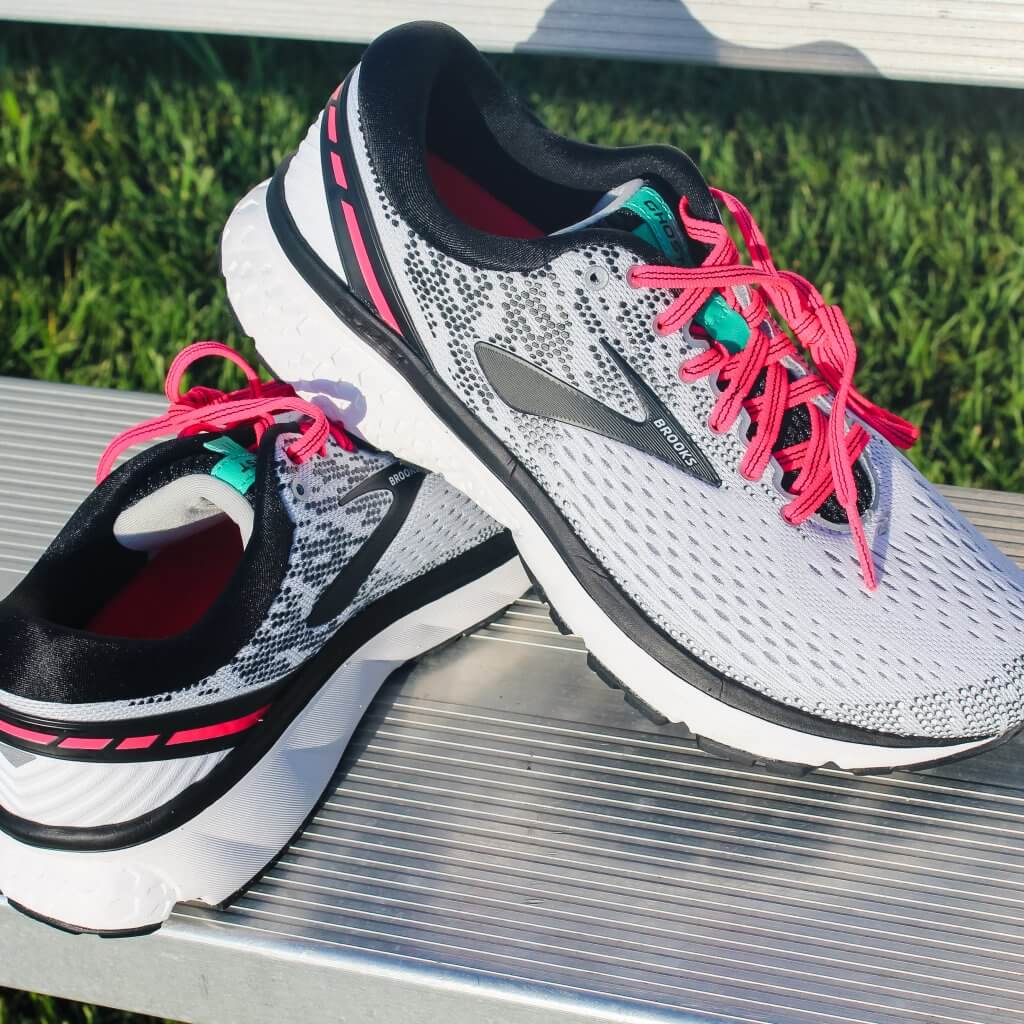
Getting Fitted
“What activities are you going to use these shoes for,” Silverio asked with iPad in hand. At Road Runner Sports, the company uses both technology and the expertise of employees to ensure the best fit possible.
“Running,” we both replied.
The fitting process at the “world’s largest running store” starts with the runner telling the Fit Expert about their weekly mileage, training goals, where they run, and any injuries. Called the ShoeDog Gait Analysis, the entire customized process takes about eight minutes. Runners are given try-on socks by Drymax, which helps wick moisture away to keep feet dry and blister-free. The runner steps onto scanner called the Volumental. The Volumental has sensors to measure the foot, providing a 3D model scan of the feet. The data is presented on an iPad, giving insights like the length of the foot and arch type.
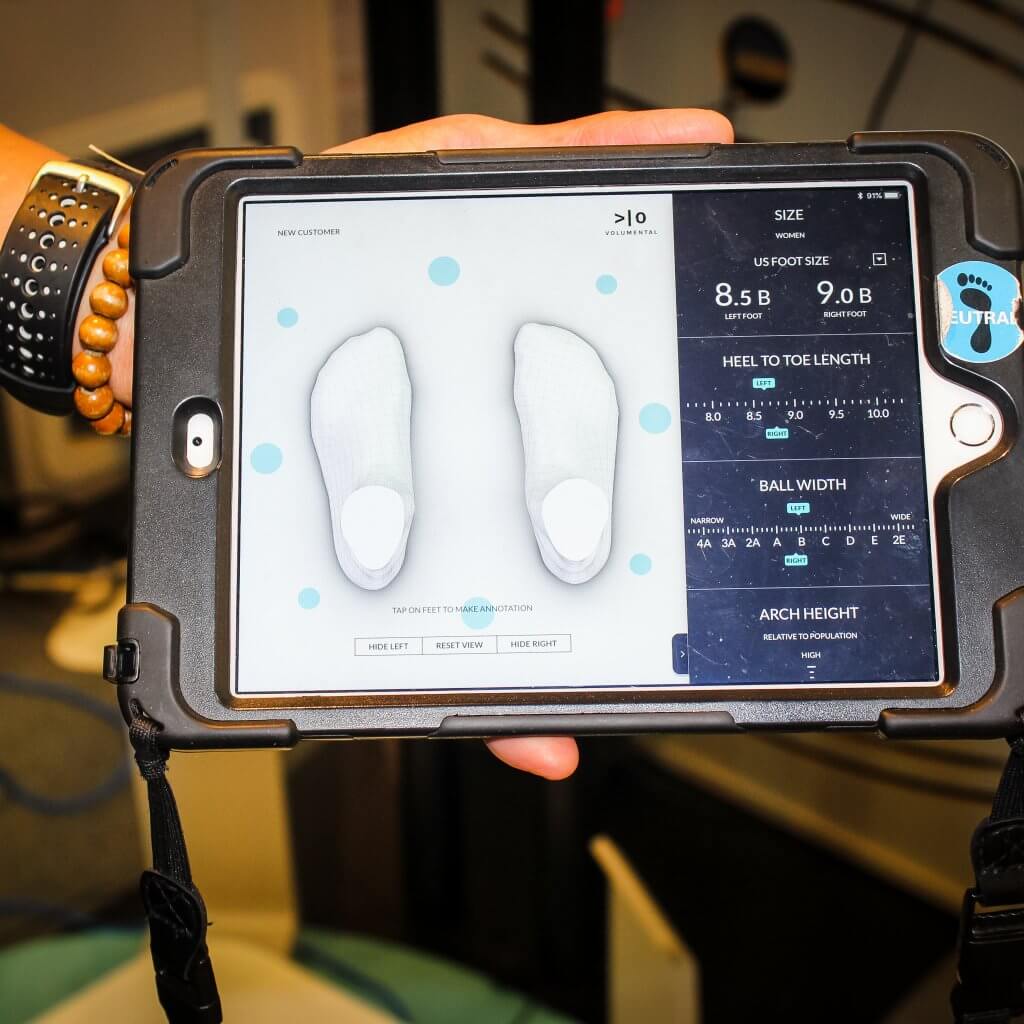
“It guarantees the best fit,” Silverio said about the process. From there, runners are asked to go on the treadmill and either walk or run for about 20-seconds. “We watch how your feet land,” he said.
Using a camera placed at foot level, the runner is recorded and the video is played back on the big screen where the expert watches frame by frame. They study the Achilles tendon to see “how the foot lands and if the Achilles flexes too much or not.”
Based on this information, the Road Runner Sports experts are able to determine if the runner falls into the stability or neutral categories of shoes.
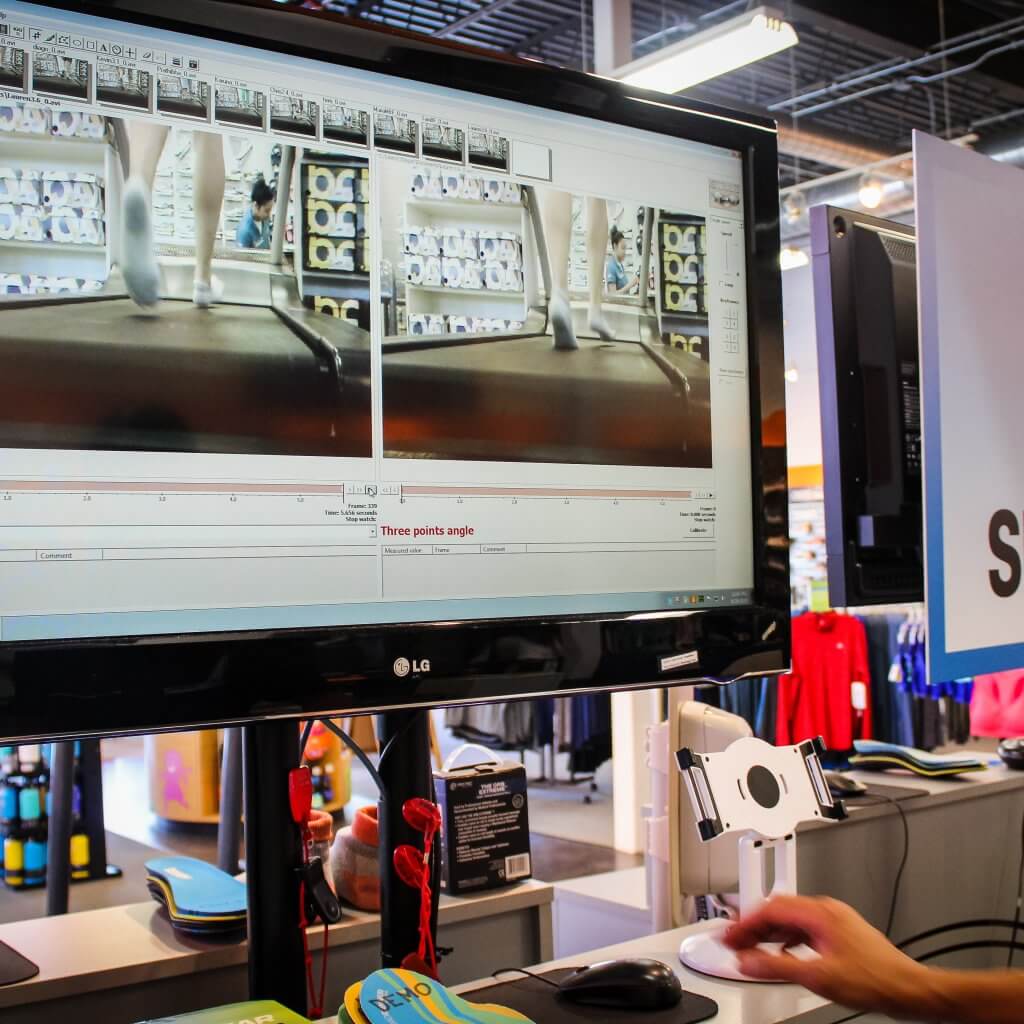
Neutral vs Stability Running Shoes
Neutral shoes are designed for those who have a neutral gait, the pattern in which they walk. “The neutral category of shoes is something we offer for someone whose Achilles tendon has what we call limited flexibility,” said Silverio.
“Pronation is normal. It’s the normal flexing of the feet,” he added. (Pronation refers to the side-to-side movement that includes a small roll inward that happens naturally when the person runs.)
“Overpronation isn’t,” Silverio said. This is when the ankle rolls too far inward and downward, which can cause issues like shin splints. “So it’s [the foot] going to flex a lot more, so people who overpronate need stability in a shoe.”
Silverio revealed that stability shoes are equipped with a medial post, a device in the instep of the shoe that is made of a denser material than the rest of the midsole. “It acts like a guard rail for the foot when it lands. When the foot starts to overpronate that medial post will catch it, and put you in the more neutral position.”
But things get even more complicated when shopping for new running shoes since every brand has different types of stability materials used. “That’s why we bring out different shoes for different people for them to feel,” he said.
Who Should Get Fitted?
Also an avid runner, who recently completed his 25th marathon at the 2018 Boston Marathon, Silverio stressed the importance of all runners—no matter who experienced they are—to get fitted for new running shoes regularly. He went from needing stability shoes has an overpronator to now wearing neutral shoes as he progressed in his running career.
The opposite may occur due to situations like an injury or weight gain, which can cause a runner to transition from a neutral category to the stability category of shoes.
All runners at all levels should get properly fitted to avoid discomfort or issues that can lead to injury.

“We’re going to recommend the fitting process for everyone whether they are beginners who’ve never been here before, or to those Ironmen, marathoners, ultra-marathoners,” Silverio said. “You’re going to get those diehards who know what they like, but at least we are going to confirm their shoe size by using the Volumental scanner..”
Seeing the changes in shoes each year, Silverio said that different materials can change the fit and comfort of the shoes.
As a result, those who loved the Brooks Glycerin 14 might not be fans of the Glycerin 15 or vice versa. “When you compare the cushioning of the Brooks to the Boost cushioning of Adidas , it’s going to feel different which is why we have everyone try different shoes on,” he said.
“It’s very hard in my experience here for folks to be brand loyal,” Silverio said, even though there are exceptions for those who buy only specific brands.
The Fit Expert said that people of all ages come into the store to get fitted at Road Runner Sports from kids sneakers to even adult size 16. Getting fitted for sneakers is beneficial for those who are on their feet all day.
“Some people come in just to get a good pair of walking shoes,” he said. So what is the difference? “A typical walking shoe is stiffer,” Silverio shared. “You can use a running shoe for walking, but you can’t use a walking shoe for running.”
When To Get Fitted For New Running Shoes?
How long does a pair of running shoes last? This all depends based on the person’s running style, their gait, what surfaces they run on and how often and for long they run. Silverio said replacement is needed typically anywhere between 350 to 500 miles. “There are some customers who put 200 miles and they wear it out because maybe they are heavier than other runners,” he said. “Then you have more efficient runners that can get up to 600 miles out a pair of shoes.”
It’s best to keep track of how many miles are logged on a single pair of shoes. Apps like Garmin Connect and Strava have the option to do this. “Or if you’re not tech savvy, some people write date of purchase on the inside of the tongue where the size, and they say in six to eight months I’ll start looking for a new pair of shoes,” Silverio revealed.
But it’s important to look out for signs of wear.
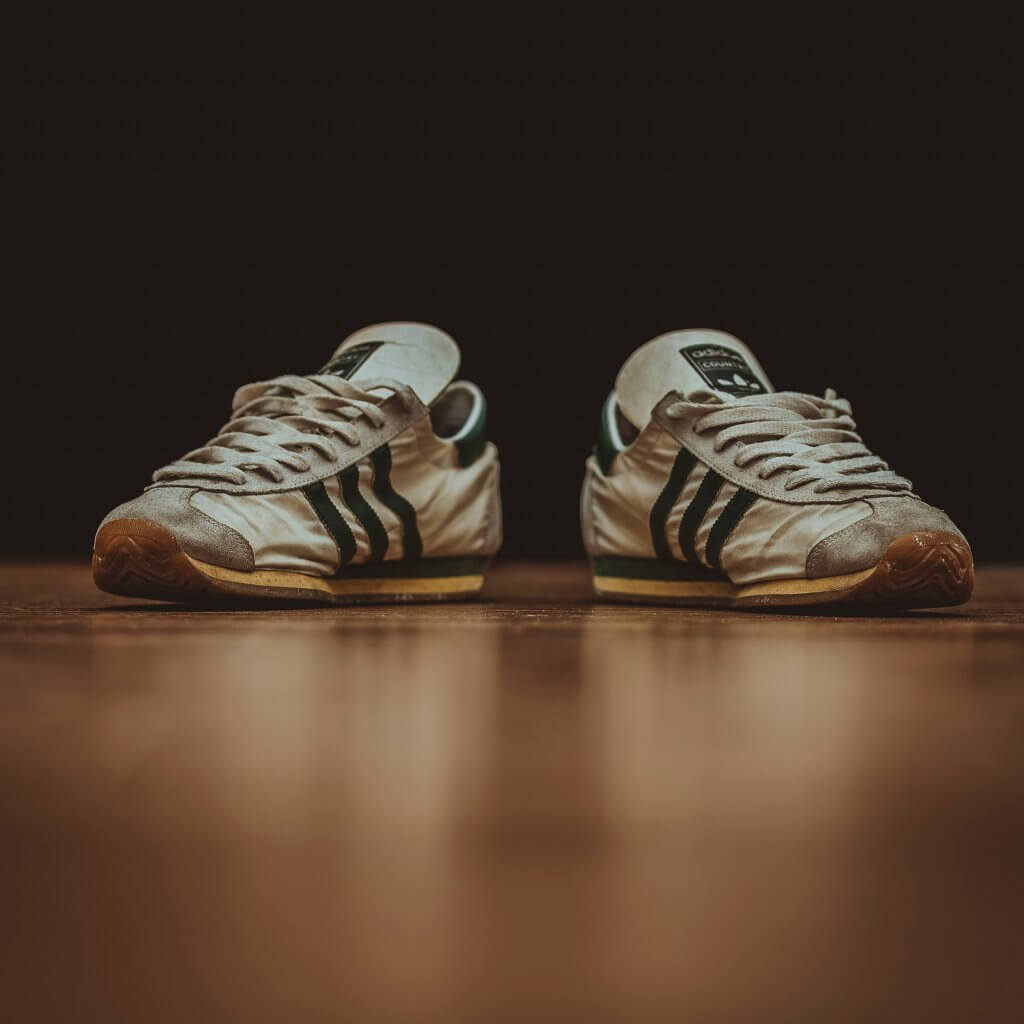
“On the visual side, when you are looking at the mid-sole, you start to see creases from the repeated pounding that runners do, or even when you are walking, you start to see more creases,” he said. “The mid-soles, the proprietary cushioning of all these shoes, last longer than others.”
“The worst case scenario is when you start feeling aches and pains that you normally wouldn’t have felt when you first bought these shoes,” Silverio said.
And since the sneakers continue to evolve every year, Silverio suggests getting fitted “at least once a year” just like we would check our eyes and get our teeth cleaned.
The good thing about Road Runners Sports is that VIP members have 90 days to try out the shoes. If they aren’t satisfied with the shoes, they can exchange them for different shoes.
It’s important to rotate running shoes as well. A 5k race or short temp run might call for a lightweight shoe. A long distance run when training for a marathon might call for more cushioned shoes. And Silverio recommended keeping gym shoes for fitness, weightlifting, cardio classes, like Zumba and CrossFit, separate from running shoes since these shoes are better designed for these activities.
The Right Fit
Road Runner Sports takes the shoe fitting process to the next level by molding custom Foot Balance insoles for each customer right there in the store. “The insoles can help alleviate aches and pains,” Silverio said. He revealed that some podiatrists recommend patients to visit Road Runner Sports to get fitted for shoes with the custom insoles.
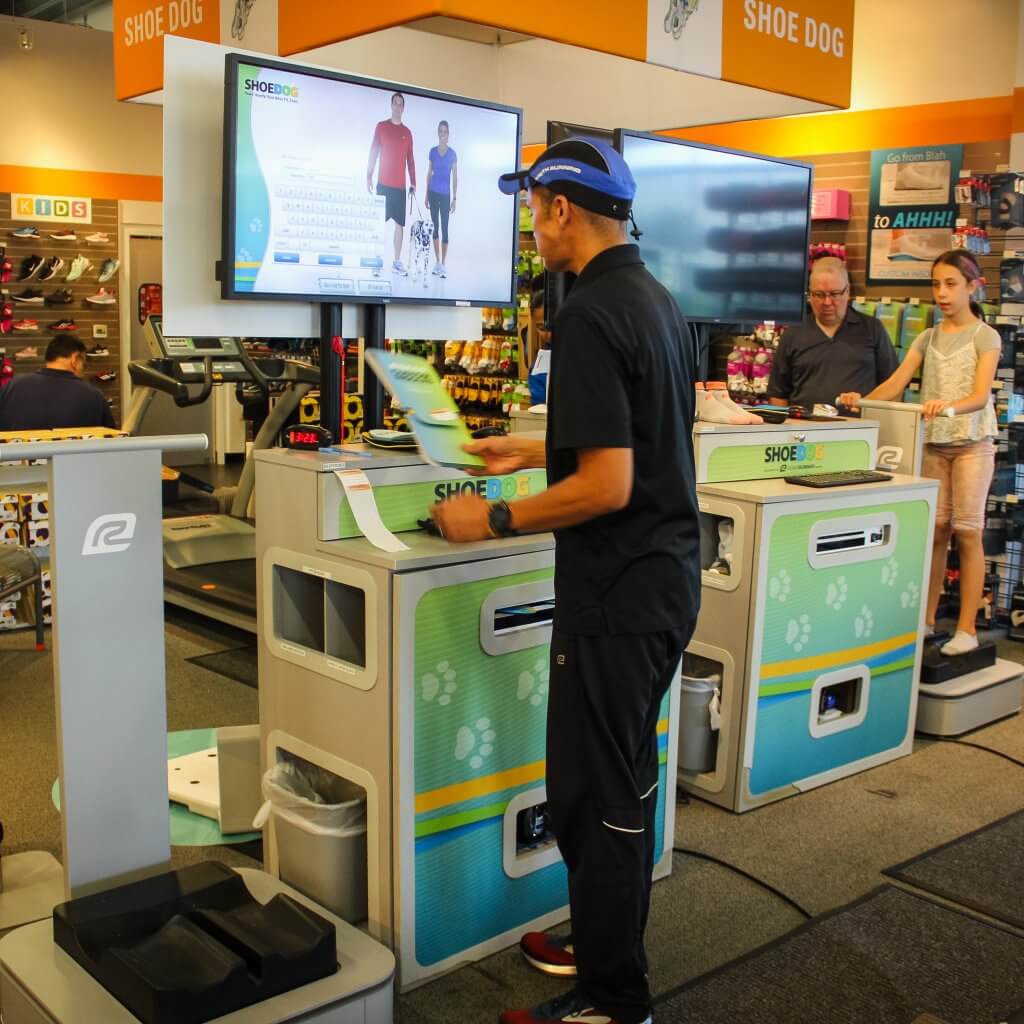
Great for support, the customized insoles last for about 1,000 miles and outlasts two to three pairs of shoes.
After finding out the runner’s shoe needs like sizing and category, the Fit Expert presents the runner with generally three pairs of sneakers to try.
“We also do a three-point fit check that consists of checking the width of the foot against the shoe, the toes to make sure there is ample spacing (typically a half width of the thumb), and the heel, making sure there is no major slipping,” Silverio said.
Running shoes should fit like a glove, sort of speak. But this only means that it is tailored to fit the needs of the runner’s feet properly. This includes having enough room for the “toes to be happy.” This means not jamming up on the inside and having ample room to flex and to splay.
The Fit Expert then continues to bring out different brands of sneakers based on the customer’s feedback. They become like a fairy godfather to a runner, granting their wish of finding that perfect fit. Customers leave able to run happily with a new pair of shoes that they can guarantee are right in every way possible.
Sources
- , How to Buy Running Shoes, Running Website
- , How to Get a Great Fit in Running Shoes, Outdoors Website
- , Fit & Buying Tips for Running Shoes, Running Store Website
- , Finding Your Perfect Fit Starts With ShoeDog, Running Store Website
- , What's the Difference Between All These Running Shoes?, News Website
- , Pronation, Overpronation, and Supination in Walking and Running , Health Website
Latest Articles
 Is Running on a Treadmill Easier Than Running Outside?Runners have their own preferences, whether it is treadmill running, running outside on the road, or exploring trails. So...
Is Running on a Treadmill Easier Than Running Outside?Runners have their own preferences, whether it is treadmill running, running outside on the road, or exploring trails. So... Is It OK to Use Trail Running Shoes on the Road?While trail running shoes can be used on roads, especially in situations where a runner encounters mixed terrains or pref...
Is It OK to Use Trail Running Shoes on the Road?While trail running shoes can be used on roads, especially in situations where a runner encounters mixed terrains or pref... How to Fix Sore Quads After Running?Rest, ice, gentle stretching, and over-the-counter pain relievers can help soothe sore quads after running. Also, ensure ...
How to Fix Sore Quads After Running?Rest, ice, gentle stretching, and over-the-counter pain relievers can help soothe sore quads after running. Also, ensure ... 10 Fruits With The Most Electrolytes to Replace Sports DrinksThese fruits are high in electrolytes such as potassium, magnesium, and calcium, essential for hydration, muscle function...
10 Fruits With The Most Electrolytes to Replace Sports DrinksThese fruits are high in electrolytes such as potassium, magnesium, and calcium, essential for hydration, muscle function...

